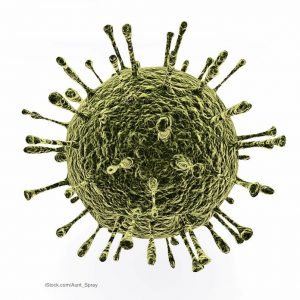Norovirus, an uber contagious bug that causes repeated, intense bouts of diarrhea and vomiting, is responsible about half of all food poisoning cases every year in the United States. It goes by a variety of names: stomach flu, winter vomiting disease, cruise ship virus, and Norwalk. It takes only a few particles of the virus to cause illness and the virus is very successful at setting up shop once it makes its way into the host. The virus is also very contagious and easily spreads person-to-person, as well as though contaminated food and surfaces.
 Any food handled by someone infected with norovirus can be contaminated. That’s why the Centers for Disease Control and Prevention (CDC) has published information for food handlers on how to prevent the spread of the disease.
Any food handled by someone infected with norovirus can be contaminated. That’s why the Centers for Disease Control and Prevention (CDC) has published information for food handlers on how to prevent the spread of the disease.
First off is good hygiene. Washing hands with warm soapy water while humming or singing Happy Birthday twice is the recommended method. However, anyone who has had a norovirus infection should wait until they are symptom-free for three days before they prepare or serve food to anyone. To food service workers on hourly wage, this might seem unreasonable, but managers may be accommodating in rescheduling workers who help restaurants to avoid having their names attached to a food poisoning outbreak.
Next is washing all foods and food preparation surfaces carefully. Food prep surfaces should be washed with a bleach solution that is 5 to 25 tbsp bleach per gallon of water. When cooking, remember that noroviruses did not make it to the top of by being weak. They can survive temperatures as high as 140°F , the quick steaming processes that are often used for cooking shellfish and a trip through a commercial dishwasher. So, use a thermometer and make sure the food you are preparing has reached a safe internal temperature.




